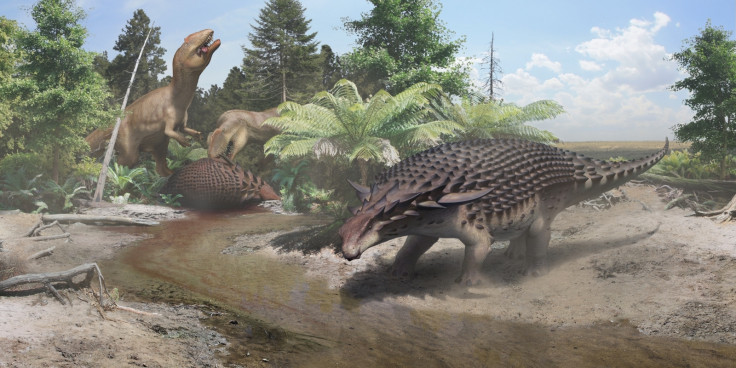A dinosaur with camouflaged and spiky armour has been discovered in Canada
The 110-million-year-old fossil is one of the best-preserved dinosaurs ever found.

A 110-million-year-old dinosaur fossil found in Alberta, Canada, is one of the best-preserved dinosaurs ever found.
It's also by far the most exquisitely preserved armoured dinosaur to be discovered. It would have been an extraordinarily tough beast, measuring 5.5 metres long from tip to tail and weighing 1,300 kilograms. The first study on the dinosaur is published in the journal Current Biology.
The fossil was discovered accidentally by a machine operator at the Suncor Millennium Mine in Alberta in 2011. They soon realised that there was a dinosaur preserved in the rock, and took it to the nearby Royal Tyrrell Museum.
It took five and a half years – a total of 7,000 hours of work – for museum technician Mark Mitchell to remove the rock around the specimen. The dinosaur was given its name Borealopelta markmitchelli after the researcher.
"This nodosaur is truly remarkable in that it is completely covered in preserved scaly skin, yet is also preserved in three dimensions, retaining the original shape of the animal," said Caleb Brown, another scientist at the museum. "The result is that the animal looks almost the same today as it did back in the Early Cretaceous."
In its lifetime it would have been a formidable beast. The creature was camouflaged, with a lighter belly than back. But in case predators weren't fooled by that, it was also covered in row upon row of short, tough spines. It is "the dinosaur equivalent of a tank", the study authors say.
"Strong predation on a massive, heavily armoured dinosaur illustrates just how dangerous the dinosaur predators of the Cretaceous must have been," said Brown.
Exactly how the dinosaur came to be found in Alberta, Canada, remains something of a mystery. In the Early Cretaceous, this region was deep underwater. Finding such a heavy dinosaur this far out in the ocean floor is puzzling. It appears to have been swept far offshore, potentially during a catastrophic flood or tsunami.
But one thing looks likely – the dinosaur will "go down in science history" as one of the most incredibly well preserved and beautiful specimens ever found. The fond museum researchers liken it to "the Mona Lisa of dinosaurs".
"You don't need to use much imagination to reconstruct it; if you just squint your eyes a bit, you could almost believe it was sleeping," Brown said.

© Copyright IBTimes 2024. All rights reserved.






